
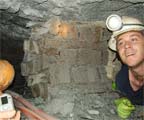
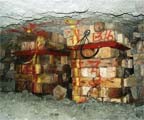
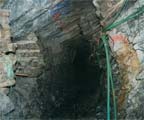
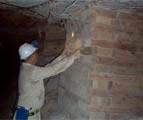
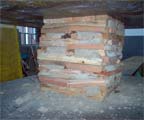
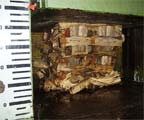
It was believed in the 80’s that mining timber packs should be stiff and strong. Frans, under the HL&H umbrella along with end-grain timber technologies, devised a system for designing and predicting timber designs for specific mining needs. Taking this knowledge further, MPD designed a number of timber pack units that utilized different timber species in the same unit to exact the required the performance. As thinking in rock engineering changed towards stiff but relatively weak yieldable support (specifically for the protection of gully shoulders under rapid loading conditions) MPD first designed the concept of timber blocks of one species being narrower than timber slabs of another species. This allowed stiffer narrower blocks to ‘bite’ into wider slabs to allow the timber to dissipate energy and allow the packs to yield over large deformations without generating the large loads normally associated with timber slab packs.
This thinking was further enhanced when MPD were the first to ‘split the slab’. This concept resulted in much lighter timber units which, with the addition of the long used end-grain concepts, allowed for stiff pack supports that were able to yield in a controlled manner through large deformations, with the rapid loading ‘x’ factor being reduced from an unacceptable 16% down to as low as 8.3%. Many designs are in use today in intermediate to deep level gold mining where rock-burst activity is all too common.
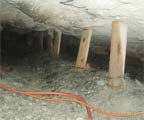
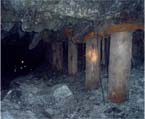
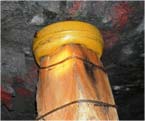
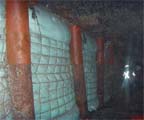
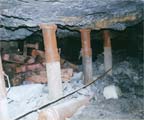
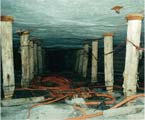
MPD have designed a number of timber elongates from the low yield low cost end of the scale, to the high yield end. The latest contribution to the elongate market is the ‘NimRite‘ Prop, manufactured and supplied by Timrite (Pty) Ltd. This product was designed through a request from the gold mining industry and will yield through 400mm of deformation without ‘walking’ during the yield phase, a common feature of timber elongates. The NimRite will stand-up straight through-out its yield mode.
As far as elongate pre-stressing is concerned, MPD were the first to design and implement (through Unique Engineering) the Kojak PSU, the first steel hydraulic pre-stressing unit to be placed at the end of the timber elongate, and up against the hangingwall.
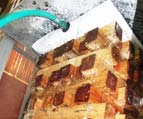
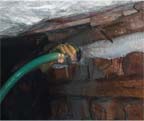
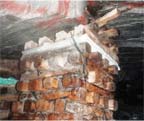
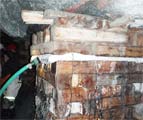
Pack pre-stressing has been around for 20 years in the mining industry, either through grout based systems or through steel hydraulic bladders. Each system has its pro’s and con’s.
One of the main issues facing grout systems is grout setting in pumps and having to haul all equipment round the stope as you pre-stress because grout hoses have to be short. MPD have designed a system (currently marketed under the name MatSetter by TimRite (Pty) Ltd), using conventional and readily available pumps to pump a grout that does not set in the pump, even if left for a week. Hoses can be as long as 30m allowing two panels to be pumped from one site.
To complement the system, MPD developed a strong pre-stressing bag that can take the required pressures to pump a 75 x 75cm pack to a pre-load of 200kN.
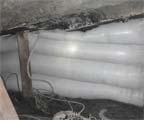
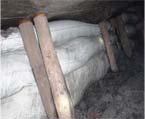
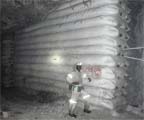
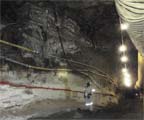
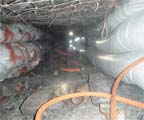
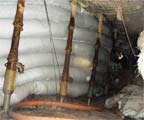
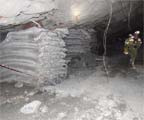
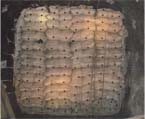
PoweRite bags (supplied by Timrite (Pty) Ltd) were designed through a request from the Platinum industry to be able to accurately place a large volume of tailings based grout to support problematic areas.
The system designed by MPD includes layers that use internal elongates as guides as the layers are filled. The bag layers are placed in the required position. Elongates installed, and then the layers are merely pumped with the tailings up to the hangingwall. Since multiple layers are used with a high surface area to volume ratio, de-watering is efficient, and slump of tailings in the installation is minimized.
The PoweRite bags versatility has resulted in the bag being used for a number of alternative situations:
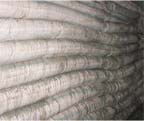
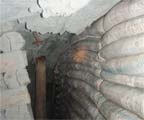
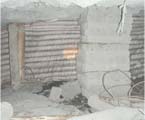
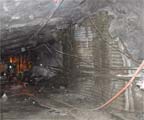
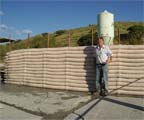
Using the same bag design technology as the PoweRite, the VentRite gives the end user the ability to build ventilation walls quickly and efficiently, either from surface pumped tailings based grout or pre-bagged mix.
The VentRite has been used for in-stope ventilation where a 2m high wall, 6m long can be pumped in an hour, and also in the sealing of large excavations where walls as big as 6 x 6m have been completed.
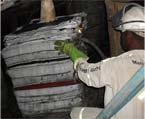
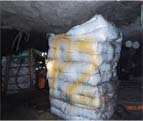
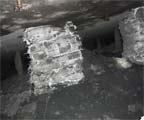
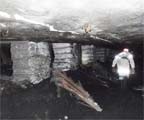
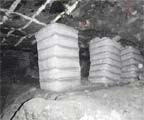
The CemRite Packs (supplied by Timrite (Pty) Ltd) were designed to compete against existing so called ‘ring steel supports’ (RSS) packs, pumped with tailings based grout, predominantly in Platinum. One issue with these packs was the large volume to surface area resulting in slump as the grout cures. The end result is a pack that does not always stay in contact with the hangingwall. The CemRite has a number of pump-able compartments (similar to the PoweRite) that decrease the volume to surface area ration and allow more efficient dewatering as the layer fill. The CemRite Pack has internal re-enforcement to assist the essentially brittle internal grout mix to yield in a controlled manner under convergence. The result is a well pumped tight fitting tailings based grout support, whose internal re-enforcement will allow the pack to yield even after blast damage removes the outer bag.
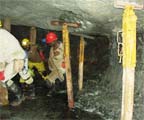
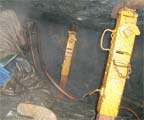
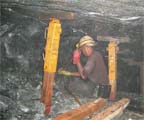
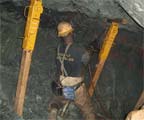
The RockRite Prop (Timrite (Pty) Ltd) was designed for the gold mining industry to overcome deficiencies in the existing temporary support available to the mines i.e. cost and the ability to yield. The RockRite uses a conventional ‘cam’ pre-stressing system to pre-stress a sharpened timber pole. The sharpened end of the timber would allow the prop to yield under convergence (thus protecting the steel section) and the timber section can simply be replaced when necessary.